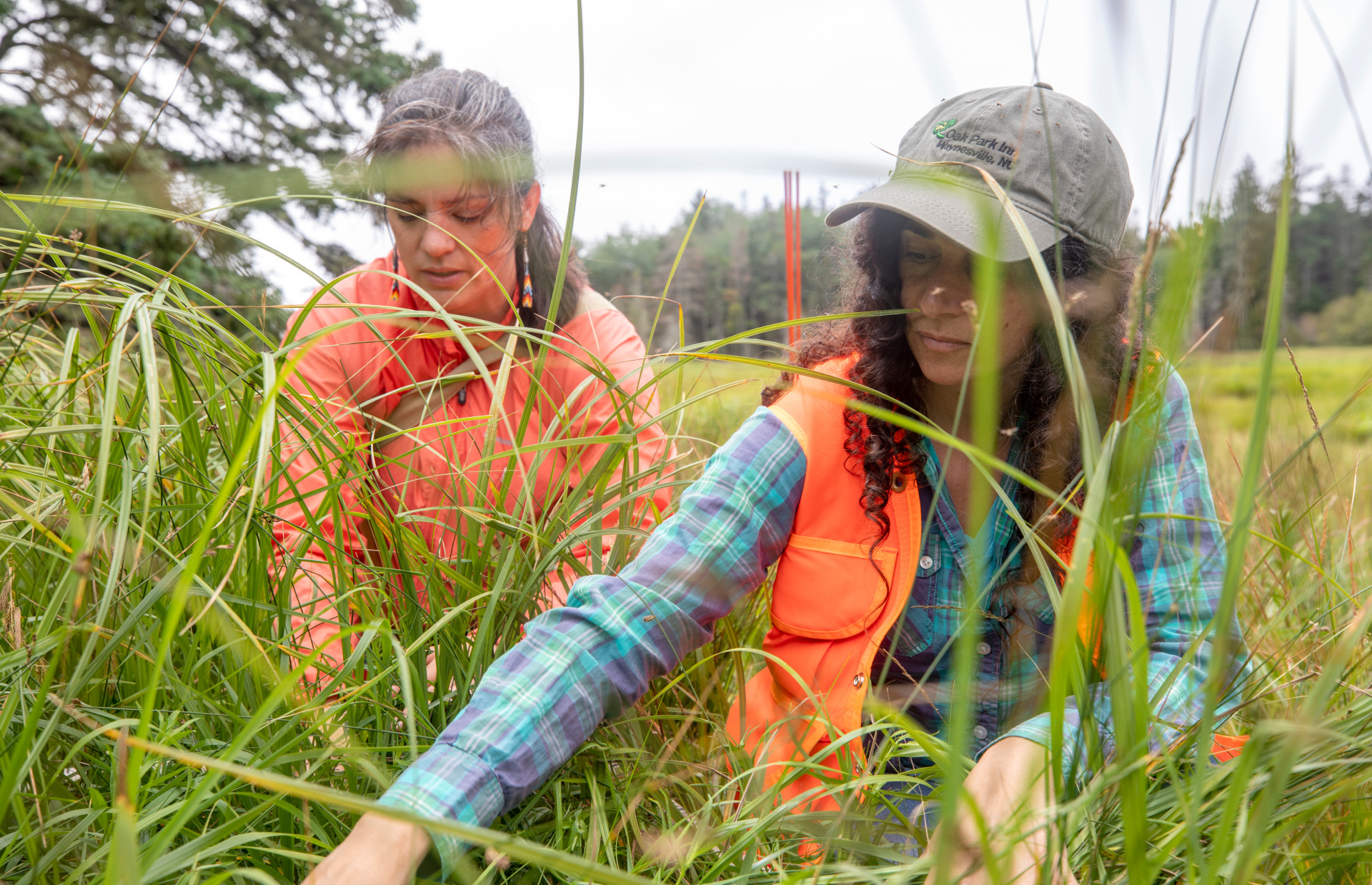Creating Co-Stewardship
Gathering with Wabanaki Nations
March 6th, 2024
Gathering with Wabanaki Nations
March 6th, 2024
BY REBECCA COLE-WILL
In late December 2023, Acadia National Park marked a milestone for ongoing work with the Wabanaki Nations.
We began a formal planning process for an Environmental Assessment (EA) for plant gathering within Acadia National Park. This step marked the “end” of the first phase of work that began in 2015.
The Plant Gathering Rule in the federal code of regulations for the National Park Service (NPS), 36 CFR 2.6, was finalized in 2016. It marked an effort by the NPS to address the issue of Tribal access and rights to gatherer plants and plant parts in national parks. At Acadia, for example, existing regulations do not allow for any plant gathering. Anyone can pick a few blueberries and apples, but no one is allowed to gather any plants, hunt, or any other consumptive activity.
The Plant Gathering regulation has four basic steps. Federally recognized Tribes with affiliation to a national park may request to gather. They are required to provide information about the plants they wish to gather and for what purpose they would use the plant within a traditional cultural context.
The park superintendent, through consultation, would then begin a process to “negotiate” an agreement that would identify the plants, the areas within the park where gathering would occur, how much would be gathered, the season of gathering, and who the Tribal members would be. The park must use that information and other data to conduct an analysis of the potential impact of the activity on park resources, following National Environmental Policy Act (NEPA) regulations.
If there is a “finding of no significant impact” (FONSI), the regional director of the NPS signs off on the proposed activity, and the superintendent can then issue a Special Use Permit to the Tribe who would then issue permits to their citizens.

Suzanne Greenlaw (left) and Michelle Baumflek harvesting sweetgrass. (Photo by Will Newton/Friends of Acadia)
If this process sounds burdensome and problematic, it is. To date, only three parks have completed agreements with affiliated Tribes. Currently, NPS is consulting with Tribes to understand the barriers and address them.
At Acadia, we began consultations with the Wabanaki Tribes in 2012 and received funding to begin research in 2015, even before the new rule was promulgated. When we first asked, “What plants would be of interest to you in Acadia?,” a common answer was: “How would we know? We have been excluded from this homeland territory for a hundred years or more!”
On the recommendation of Shari Venno, environmental planner for the Houlton Band of Maliseet Indians, Dr. Michelle Baumflek, now a research scientist with the US Forest Service, came on as principal investigator. Michelle quickly enlisted Suzanne Greenlaw, then a PhD candidate in Forestry at the University of Maine and a Maliseet citizen, to co-lead the work with her. Both Michelle and Suzanne had experience working with the Tribes on research about culturally significant plants. Listening to Wabanaki representatives, they quickly learned that sweetgrass is a plant of great cultural significance and concern. Since it grows in salt marshes along the coast, Acadia might be a place where it would be important.
All along the coast of Maine, Wabanaki people have been excluded from access to traditional harvesting locations.
The coast is largely now private property. Wabanaki tell of traumatic encounters with landowners who have threatened them with guns and dogs and denied access. So, the opportunity to have safe access and gathering rights within Acadia is significant.
A botanical survey by Glen Mittelhauser documented that sweetgrass was present in several park salt marshes. He developed a monitoring plan adopted from standard botanical surveys to assess abundance and distribution. Gatherers were asked to harvest in plots along predefined transects that would be monitored after harvest. Control plots would be left unharvested as a comparison.
What Suzanne and Michelle quickly learned from the gatherers, however, was that plant gathering doesn’t work that way.
Gatherers, with generations of knowledge about the plant, salt marshes, and the cultural act of gathering, have a deep understanding of how, when, and where to harvest. Plant gathering is rooted in culture. We needed to figure out a whole new methodology that prioritized Indigenous knowledge and how to integrate that with Western science.
Suzanne and Michelle did just that. Working closely with the advisory group of gatherers, they “let” them choose preferred locations for harvesting and used semi-structured interviews to learn about individual preferences for harvesting, location, the length of grass they chose, and the many meanings and significance of gathering. This approach underscored that harvesting is good both for the sweetgrass and for people.
The gatherers are the experts and make decisions about the research agenda. Dr. Jane Anderson worked with us to co-create a statement of rights – Sweetgrass Cultural Protocol: Advice for Good Relations with a Culturally Significant Relative and a documentary film is in development that
features the voices and stories of gatherers.
Acadia and the Wabanaki Nations have worked together now for eight years. The end of one phase of the “project” is leading into the next, where integration of Indigenous knowledge and collaboration with Wabanaki experts is the way we always work to expand the meaning and practice of co-stewardship in Acadia National Park.
REBECCA COLE-WILL is the Chief of Resource Management for Acadia National Park.
Additional Coverage:
NPS plan would let Maine tribes harvest sweet grass at Acadia – via E&E News